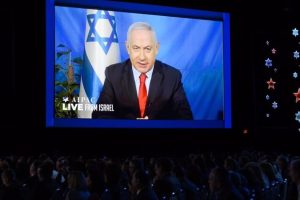In Rome, the “voices for peace” marked the Good Friday meditations: they focused on the conflicts that bloodied Asia, on the gesture of Sister Ann Rose Nu Tawng, who knelt down to stop the military in Myanmar and on faith of the Christians of Aleppo and Mosul. Due to the cold, Pope Francis did not attend the rite but participated by praying from Casa Santa Marta.
Vatican City () – “All the places where there is conflict, hatred and persecution” are the seasons. And also, the “voices of peace”, the center of the Stations of the Cross on Good Friday 2023 in the Colosseum, entirely dedicated to what Francis has called on several occasions “the third world war in parts”.
This year, Pope Francis was not physically present on Palatine Hill: in the afternoon, the Vatican Press Office had announced that “due to the intense cold of these days” the pontiff would join the prayer from Casa Santa Marta , delegating the presidency of the rite to the Cardinal Vicar of Rome, Angelo De Donatis. And unlike in 2005, when it was John Paul II who was unable to attend for health reasons, this time no images of the Pope were shown during the live television broadcast.
The heart of the Via Crucis was the invocation for peace, through meditations by the victims of conflicts, including many faces of suffering in Asia. In particular, during the eighth station – that of the meeting between Jesus and the women of Jerusalem – the conflict that bloodied Myanmar and the courageous gesture carried out two years ago by Sister Ann Rose Nu Tawng, the religious of the Sisters of Saint Francis Xavier, were evoked. in Myitkyina. “The woman became a spiritual mother to so many. In defense of her people, she knelt before the armed power and, willing to give her life, meekly pleaded for peace and reconciliation.” Jesus, now as then. In the macabre maelstrom of hatred, the dance of peace is born. And we Christians want to be instruments of peace. Convert us to you, Jesus, and give us strength, because only you are our strength.”
During the seasons, the odyssey of those who – also from Asia – flee from “bombs, knives, hunger and pain”, “squeezed into trucks, hidden in trunks, thrown into dangerous boats” was also recalled. “Will there be a Cyrenean for me?”, she said to herself, to give these people a voice. In the tenth station – when Jesus is stripped of his cloak – the pain of a Ukrainian boy forced to flee his home and that of a Russian boy who lost a brother in the war and therefore “feels doubly bad” was evoked. . But the Pope’s Via Crucis did not forget Aleppo nailed to the cross either. And he juxtaposed the memory of Jesus’ death with the grief of a mother who lost a child while playing in Mosul. “It is not easy to accept this reality – he wrote in meditation – but faith helps me to have hope, because it reminds me that the dead are in the arms of Jesus. And the survivors try to forgive the aggressor, because Jesus forgave his executioners .”
“Lord Jesus, Eternal Word of the Father, for us you became silent,” Cardinal De Donatis said at the end of the rite, reading the final prayer that Pope Francis had prepared. The invocation was accompanied by 14 ‘thanks’ to Jesus, one for each of the stations: Thank you “for the love you showed in the face of betrayal”, “for the hope you instill in the hour of trial”, “for the forgiveness that you offered to your assassins”. “Thank you, for defeating death -he concluded-, for the light that you have turned on in our nights. And reconciling all divisions, you have made us all brothers, children of the same Father who is in heaven”.





![[Img #74664]](https://thelatestnews.world/wp-content/uploads/2024/12/James-Watson-The-controversial-genius-behind-the-double-helix-150x150.jpg)






